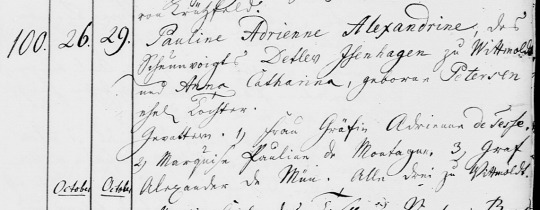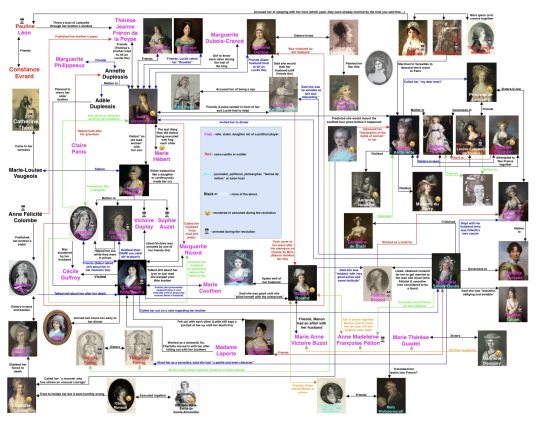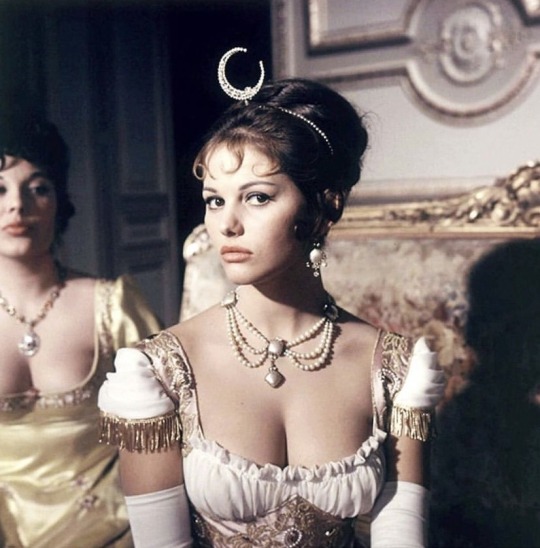#pauline french
Explore tagged Tumblr posts
Text
In 1950, a plague known as Masculitis was thought to have killed every man on Earth over the age of 12. Boys 12 and younger had survived due to a vaccination that had left them sterile. Women took over all major roles including President of the United States. Chaos was created when a fertile man was found and captured. (The Last Man on Earth flm, loosely based on the book The Last Man and a short story in Munsey's Magazine)

#nerds yearbook#1950#pandemic#the last man on earth#munsey's magazine#donald w lee#john w swain#mary shelley#john g blystone#earle foxe#derelys perdue#grace cunard#gladys tennyson#marion aye#clarrissa selwynne#pauline french#marie astaire#buck black#jean johnston#maurice murphy#william steele#jean dumas#harry dunkinson#fay holderness#lois boyd#anita garvin#martha mattox#the last man#jean meredith
4 notes
·
View notes
Text
🌺🪷 art dump!🪷🌺

isaac newton sketch for @isaacnewtonlvr !!!!!♡


A LOVELY COUTHON and malewife murat 😋


pauline and josephine 🥰

HORATIO NELSON!!!!!!111!1!1!1!!1!1!1!!!111!!!!++111
#art#fanart#artists on tumblr#josephine bonaparte#pauline bonaparte#horatio nelson#joachim murat#isaac newton#georges couthon#frev#french revolution#frev community#napoleonic era#mhsmhnsnhhgjghhgghhhh i love drawing women 🌹🌹🌹#believe me i always draw women but. i happen to only post men on tumblr i should post more women
69 notes
·
View notes
Text
Rare women have in ancient republics risen to the height of public virtues; they knew how to combine the modesty of their sex with the civic courage which is a duty for ours. Republican France, during the first storms of the revolution, saw these glorious examples multiply in its midst, a single one of which would have made another people proud. It crowned the heroines of October 5; it saw French women in popular societies, eager to hear, from the mouths of their brothers and their husbands, the interesting lessons of patriotism that they had to engrave in the souls of their children. The homeland, in the crises of liberty, smiled on the generous efforts of a few intrepid citoyennes. The cowardly architects of our discord have despised this type of merit; they wanted there to exist among us a permanent society of women clothed exclusively with the modest title of revolutionaries, nobly separated from the male sex, like long ago, in the mysteries of the good goddess. They reduced to silence the estimable citoyennes whom the love of the public good had led there, they entrusted the scepter to the hands of some female Demosthenes, inspired by these English and Austrian sylphs. Their primary occupation is to cry out for famine, to push the people into despair, to denounce the imperturbable friends of liberty. They are the ones who came in the wake of Jacques Roux and Leclerc, to insult the Mountain and the Jacobins, to insult and threaten the representatives of the people. They are responsible for teaching the universe that modesty is a prejudice, that the distinction between the talents and occupations of the two sexes is nothing other than an invention of the aristocracy; that men must abandon the tribune and the seats of the senate to women; and all men's clubs must appear before the tribunal of revolutionary presidents. Porcia was only an imbecile, with her virtue revered in Rome; she should have played the role of Cato. Cornelia only played a vulgar role, instructing her sons, still children, to defend the rights of the people; Cornelia should have mounted the rostrum for harangues: instead of offering their jewels to the homeland; they will not cry out when they learn of their glorious death: I had given birth to him to serve the homeland; this merit is too vulgar; they are sterile like vice; but on the other hand, they will declaim against the founders of the republic, and slander the representatives of the people. Such is the sublime instrument that the agents of the enemies of the homeland keep in reserve to incite trouble if necessary, at the first moment of embarrassment or disaster with which the republic would be threatened.
Rapport écrit de la main de Robespierre, sur la faction de l’étranger, cited in Pièces trouvées dans les papiers de Robespierre et complices (24 September 1794).
#first the slavery controversy and now ”sterile as vice”… ok max 🫤#robespierre#pauline léon#claire lacombe#frev#french revolution#though gotta be fair this is still far from the worst take I’ve seen#which isn’t saying a lot since the bar is digged into the ground but still#who knew robespierre was 230 years early in the ”what makes a female character strong” debate
54 notes
·
View notes
Text
youtube
A Distant Dark Source by Hypno5e - Video directed and edited by Emmanuel Jessua
#somethingneweveryday#music#french music#post metal#hypno5e#emmanuel jessua#metal#jonathan maurois#anne flore krumeich#cédric pages#gredin#pelagic records#théo begue#thierry jessua#long form video#pauline collin#julien ollier#clément puig#chris edrich#christophe edrich#Youtube#cedric pages#Bandcamp
50 notes
·
View notes
Text

Two Venuses
1 — Pauline Bonaparte by Antonio Canova
2 — Someone’s cat
#pauline bonaparte#Pauline#napoleonic memes#napoleonic era#napoleonic#napoleon#first french empire#napoleon bonaparte#19th century#history#france#french empire#canova#art#meme#antonio canova#Venus#Aphrodite#sculpture#history memes#art memes#1800s#french#empire style#pretty
417 notes
·
View notes
Text

The First Sense of Coquetry
Date: Pauline Auzou (French, 1775–1835)
Date: 1804
Medium: OIl on Canvas
Collection: Private Collection
#genre art#oil on canvas#female#french culture#mirror#fireplace#pauline auzou#early 19th century painting#european#woman#coquetry
24 notes
·
View notes
Text

Pauline Peyraud-Magnin
Gender: Female
Sexuality: Lesbian
DOB: 17 March 1992
Ethnicity: White - French
Occupation: Prof soccer player
#Pauline Peyraud Magnin#lesbianism#lgbt#lgbtq#wlw#female#lesbian#1992#white#french#athlete#football#soccer
37 notes
·
View notes
Text

François-Athanase de Charette de La Contrie by Jean-Baptiste Paulin Guérin
#franćois athanase de charette#portrait#art#war in the vendée#nobleman#royalist#royalists#france#brittany#breton#french#french revolution#french revolutionary wars#jean baptiste paulin guérin#history#gentleman#vendéan#the terror#the reign of terror#europe#european#catholic and royal army of vendée#kingdom of france#aristocrat#general#monarchy#nobility#christianity#rebellion#king of the vendée
49 notes
·
View notes
Note
top 5 frev women?
Thanks for the ask! Oh, this one's going to be tough as well. But let's see...
Lucile Desmoulins
Much more than a pair of fine eyes, Lucile was, like her husband, heavily invested in politics. She shared Camille's convictions and is even reported to have defended him in front of others. She did pay the price for her loyalty in the end, when she was only my age (though it should be noted that the whole Germinal/Indulgent business is much more complex to be accurately presented in this short overview of course).
I also really like her writing! Her 'advice' to Marie Antoinette is definitely quite something. Go read it if you haven't! Her diary is also at times quite relatable. ("I feel that I am born to live far from men. The more I examine them, the more I seek to understand them, the more I see that one should flee from them.”)
Bonus - my favourite quote of hers on women's place in society:
To hear [men] speak, we are celestial beings, nothing is equal to us. Ah! may they deify us less and leave us free!

2. Simone Évrard
I have to confess I was sleeping on Simone for the longest time, but she is such an interesting figure! She continued to be so supportive of Marat even when times were incredibly tough for him. I'm convinced he wouldn't be able to achieve half as much as he did if it weren't for her. She then went on to defend his legacy long after his death, despite the fact that it caused quite a few problems for her. I find her incredibly inspiring!

3. Charlotte Robespierre
Listen, I'm always going to appreciate a single lady who made it her life's mission to try and take charge of the narrative.
In all seriousness, I'm still not quite sure how her mind worked, but I find her incredibly interesting. Especially the way she seemed to be so protective or Maximilien (re: Éléonore?), both during his life and after his death. She also seemed to have been so strong-willed, much like her brother, perhaps even more so. The fact that she accompanied Augustin to suppress the revolt in Nice is still kind of mind-blowing to me. And the fact that she was supposedly going to marry Fouché at one point? One of my favourite historical what-ifs, honestly. Just imagine!
(That said, my knowledge of her is quite lacking. If anyone can recommend a good biography on Charlotte, I'd be really thankful!)

4. Olympe de Gouges
Okay, here's a controversial one!
Obligatory 'am not a Girondist!', but I feel that I still have to give her some credit for her feminist ideas. Yes, her feminism was centred on upper-class women, but I still see her contributions as an important first step. Déclaration des droits de la Femme et de la Citoyenne is one of the most crucial documents in the history of feminism in my opinion.
I also appreciate the fact that while classist, her feminism was much less 'white-only' than that of a lot of women that came after her (case in point a lot of the Seneca Falls suffragettes in 19th century America). Again, not all of her views on slavery probably stand up to the test of time, but I will always appreciate anyone in the 18th century who expresses abolitionists sentiments, which she did.
She is also the author of many of my favourite french revolution era quotes:
"A woman has the right to mount the scaffold. She must possess equally the right to mount the rostrum."
She has a point and honestly? Well said.
(Side note - also kind of obsessed with her address to Robespierre. "I suggest we should bathe together in the Seine but to entirely depurgate you of those blemishes with which you have smeared yourself since 10th June, we should attach sixteen or twenty-four pound cannon balls to our feet , and together race into the flood ….")
That said, the narrative that she was executed for her feminist views is both incorrect and extremely tiring.

5. Pauline Léon
How can I not mention the leader of female Sans-culottes herself? To counter de Gouges, let me mention another French revolutionary feminist that is - in a lot of ways - an antithesis to Olympe, since she was: a) a radical republican b) a member of the working class.
She seemed to have been incredibly courageous and always managed to find herself right in the centre of the action (Bastille, Champ de Mars...). There are unfortunately not that many resources on her as on some of the other female figures, but I think her story is incredibly important. More so for the fact that she was one of female revolutionary figures we know at least something about that wasfrom a working class - as opposed to upper class - background.
My favourite fact about her is that she wanted to establish all-female militia group to defend the country against counter-revolutionaries. Not going to lie, it was a wild proposal, but it would be kind of amazing to see it happen.

(It was not easy to find her portrait, but this should be her I hope?)
#thanks for the ask!#ask game#french revolution#frev#frevblr#1700s#18th century#women's history#lucile desmoulins#charlotte robespierre#olympe de gouges#simone érvard#pauline léon#maximilien robespierre#augustin robespierre#frev community#jean paul marat#camille desmoulins#french history#feminism#women's rights#hope I didn't get anything wrong feel free to correct me!
45 notes
·
View notes
Text










Pauline at the beach (Éric Rohmer, 1983)
#amanda langlet#arielle dombasle#Pauline à la plage#eric rohmer#rosette#french cinema#favorite movies#pauline at the beach
122 notes
·
View notes
Text

#tv shows#tv series#silent hill ascension#oscar jordan#michael ursu#pauline yasuda#2020s series#canadian series#french series#have you seen this series poll
15 notes
·
View notes
Text
The Story of Adrienne (1800) and Pauline (1797)


I often go on and on about how fascinated I am by the time the La Fayette’s and the Noialles’ spend in exile at the estates Wittmoldt and Lehmkuhlen. Many modern books and publications cover this episode only sparsely – and to be honest, at first glance, events like the American and French Revolution for example appear to be the more interesting, more important and more dramatic chapters in La Fayette’s life. I would like to make the point, that the families time in exile should not be underestimated and that many things happen there, that profoundly influenced the La Fayette’s and their kin. This episode is also a fine example of the family interacting with people outside their usual sphere. People from a different country, a different culture, often with different perceptions.
The other day I was reading a book about Wittmoldt, both the Wittmoldt estate as well as the small village by the same name nearby. The book was written by the head teacher of the local school and a large part of his book deals with the school, its pupils and former teachers throughout time. The book mentions a former head teacher, Detlef Ludwig Petersen, who lived at the Wittmoldt estate during a time where Wittmoldt had many different owners and inhabitants – Madame de Tessé, Adrienne de La Fayette’s aunt, among them.
Now, what is so special about Petersen? He and his wife had four children. Three of them were born in Güsdorf, a neighbouring village, before the Petersen’s moved to Wittmoldt. While living at the Wittmoldt estate they had one last child, a daughter named Adrienne Pauline. My interest was immediately peaked since the name was not only very French – in contrast to the very German names of the first three children, but also the names of the French inhabitants of Wittmoldt at the time.
La Fayette’s wife and her aunt were both named Adrienne and there was also a younger sister, La Fayette’s sister-in-law, who stayed at Wittmoldt and that was named Pauline. This could hardly be a coincidence! I had a look at the archival records and found the entry of Adrienne Pauline’s baptism.

Landeskirchliches Archiv der Evang.-Luth. Kirche, Kirchenkreis Plön-Segeberg, Plön, Taufen 1764-1800, p. 247.
The child was born on April 23, 1800 and baptised four days later on April 27.
But wait! That is not all!
While going through the records, I found a second child with a name too extraordinary to be a coincidence.

Landeskirchliches Archiv der Evang.-Luth. Kirche, Kirchenkreis Plön-Segeberg, Plön, Taufen 1764-1800, p. 203.
Pauline Adrienne Alexandrine was born on September 23, 1797, and baptised on September 29. Not only is her name a direct reference to the two sisters and their aunt, but the record also reveals that both Madame de Tessé, as well as Pauline, Marquise de Montague were witnesses to the proceedings.
The name of Pauline Adrienne Alexandrine’s father does not ring a bell for me, but her mother’s maiden name was Petersen. Now, Petersen is and always has been a very, very common German surname and therefor this could be two different Petersen-families. But Wittmoldt is still a very small village with few inhabitants and things were not looking any different at the turn of the 19th century. It is therefore entirely possible (and in my opinion quite likely) that not one, but two couples in the Petersen-family decided to name their daughter after Adrienne and Pauline.
(I think that the Adrienne, Madame de Tessé, played a bigger role here then Adrienne, Marquise de La Fayette since de Tessé owned Wittmoldt, lived there longer than her niece and was directly referred by name in the records of the 1797 baptism.)
This might not be a big and flashy story compared with some of La Fayette’s exploits during the American Revolution for example, but I like to believe that this is a very human story. The little things, the silent connections that speak of respect and intimate relationships - stories that are history without making history.
#marquis de lafayette#resources#la fayette#lafayette#french history#american history#history#french revolution#madame de tessé#pauline marquise de montague#1797#1800#detlef ludwing petersen#wittmoldt#lafayette in exile
18 notes
·
View notes
Text

I decided to try this but for the girlies instead.
Are you sure want to click on ”keep reading”?
For Pauline Léon marrying Claire Lacombe’s host, see Liberty: the lives of six women in Revolutionary France (2006) by Lucy Moore, page 230
For Pauline Léon throwing a bust of Lafayette through Fréron’s window and being friends with Constance Evrard, see Pauline Léon, une républicaine révolutionnaire (2006) by Claude Guillon.
For Françoise Duplay’s sister visiting Catherine Théot, see Points de vue sur l’affaire Catherine Théot (1969) by Michel Eude, page 627.
For Anne Félicité Colombe publishing the papers of Marat and Fréron, see The women of Paris and their French Revolution (1998) by Dominique Godineau, page 382-383.
For the relationship between Simonne Evrard and Albertine Marat, see this post.
For Albertine Marat dissing Charlotte Robespierre, see F.V Raspail chez Albertine Marat (1911) by Albert Mathiez, page 663.
For Lucile Desmoulins predicting Marie-Antoinette would mount the scaffold, see the former’s diary from 1789.
For Lucile being friends with madame Boyer, Brune, Dubois-Crancé, Robert and Danton, calling madame Ricord’s husband ”brusque, coarse, truly mad, giddy, insane,” visiting ”an old madwoman” with madame Duplay’s son and being hit on by Danton as well as Louise Robert saying she would stab Danton, see Lucile’s diary 1792-1793.
For the relationship between Lucile Desmoulins and Marie Hébert, see this post.
For the relationship between Lucile Desmoulins and Thérèse Jeanne Fréron de la Poype, and the one between Annette Duplessis and Marguerite Philippeaux, see letters cited in Camille Desmoulins and his wife: passages from the history of the dantonists (1876) page 463-464 and 464-469.
For Adèle Duplessis having been engaged to Robespierre, see this letter from Annette Duplessis to Robespierre, seemingly written April 13 1794.
For Claire Panis helping look after Horace Desmoulins, see Panis précepteur d’Horace Desmoulins (1912) by Charles Valley.
For Élisabeth Lebas being slandered by Guffroy, molested by Danton, treated like a daughter by Claire Panis, accusing Ricord of seducing her sister-in-law and being helped out in prison by Éléonore, see Le conventionnel Le Bas : d'après des documents inédits et les mémoires de sa veuve, page 108, 125-126, 139 and 140-142.
For Élisabeth Lebas being given an obscene book by Desmoulins, see this post.
For Charlotte Robespierre dissing Joséphine, Éléonore Duplay, madame Genlis, Roland and Ricord, see Mémoires de Charlotte Robespierre sur ses deux frères (1834), page 76-77, 90-91, 96-97, 109-116 and 128-129.
For Charlotte Robespierre arriving two hours early to Rosalie Jullien’s dinner, see Journal d’une Bourgeoise pendant la Révolution 1791–1793, page 345.
For Charlotte Robespierre physically restraining Couthon, see this post.
For Charlotte Robespierre and Françoise Duplay’s relationship, see Mémoires de Charlotte Robespierre sur ses deux frères (1834) page 85-92 and Le conventional Le Bas: d’après des documents inédits et les mémoires de sa veuve (1902) page 104-105
For the relationship between Charlotte Robespierre and Victoire and Élisabeth Lebas, see this post.
For Charlotte Robespierre visiting madame Guffroy, moving in with madame Laporte and Victoire Duplay being arrested by one of Charlotte’s friends, see Charlotte Robespierre et ses amis (1961)
For Louise de Kéralio calling Etta Palm a spy, see Appel aux Françoises sur la régénération des mœurs et nécessité de l’influence des femmes dans un gouvernement libre (1791) by the latter.
For the relationship between Manon Roland and Louise de Kéralio Robert, see Mémoires de Madame Roland, volume 2, page 198-207
For the relationship between Madame Pétion and Manon Roland, see Mémoires de Madame Roland, volume 2, page 158 and 244-245 as well as Lettres de Madame Roland, volume 2, page 510.
For the relationship between Madame Roland and Madame Buzot, see Mémoires de Madame Roland (1793), volume 1, page 372, volume 2, page 167 as well as this letter from Manon to her husband dated September 9 1791. For the affair between Manon and Buzot, see this post.
For Manon Roland praising Condorcet, see Mémoires de Madame Roland, volume 2, page 14-15.
For the relationship between Manon Roland and Félicité Brissot, see Mémoires de Madame Roland, volume 1, page 360.
For the relationship between Helen Maria Williams and Manon Roland, see Memoirs of the Reign of Robespierre (1795), written by the former.
For the relationship between Mary Wollstonecraft and Helena Maria Williams, see Collected letters of Mary Wollstonecraft (1979), page 226.
For Constance Charpentier painting a portrait of Louise Sébastienne Danton, see Constance Charpentier: Peintre (1767-1849), page 74.
For Olympe de Gouges writing a play with fictional versions of the Fernig sisters, see L’Entrée de Dumourier à Bruxelles ou les Vivandiers (1793) page 94-97 and 105-110.
For Olympe de Gouges calling Charlotte Corday ”a monster who has shown an unusual courage,” see a letter from the former dated July 20 1793, cited on page 204 of Marie-Olympe de Gouges: une humaniste à la fin du XVIIIe siècle (2003) by Oliver Blanc.
For Olympe de Gouges adressing her declaration to Marie-Antoinette, see Les droits de la femme: à la reine (1791) written by the former.
For Germaine de Staël defending Marie-Antoinette, see Réflexions sur le procès de la Reine par une femme (1793) by the former.
For the friendship between Madame Royale and Pauline Tourzel, see Souvernirs de quarante ans: 1789-1830: récit d’une dame de Madame la Dauphine (1861) by the latter.
For Félicité Brissot possibly translating Mary Wollstonecraft, see Who translated into French and annotated Mary Wollstonecraft’s Vindication of the Rights of Woman? (2022) by Isabelle Bour.
For Félicité Brissot working as a maid for Louise Marie Adélaïde de Bourbon, see Mémoires inédites de Madame la comptesse de Genlis: sur le dix-huitième siècle et sur la révolution française, volume 4, page 106.
For Reine Audu, Claire Lacombe and Théroigne de Méricourt being given civic crowns together, see Gazette nationale ou le Moniteur universel, September 3, 1792.
For Reine Audu taking part in the women’s march on Versailles, see Reine Audu: les légendes des journées d’octobre (1917) by Marc de Villiers.
For Marie-Antoinette calling Lamballe ”my dear heart,” see Correspondance inédite de Marie Antoinette, page 197, 209 and 252.
For Marie-Antoinette disliking Madame du Barry, see https://plume-dhistoire.fr/marie-antoinette-contre-la-du-barry/
For Marie-Antoinette disliking Anne de Noailles, see Correspondance inédite de Marie Antoinette, page 30.
For Louise-Élisabeth Tourzel and Lamballe being friends, see Memoirs of the Duchess de Tourzel: Governess to the Children of France during the years 1789, 1790, 1791, 1792, 1793 and 1795 volume 2, page 257-258
For Félicité de Genlis being the mistress of Louise Marie Adélaïde de Bourbon’s husband, see La duchesse d’Orléans et Madame de Genlis (1913).
For Pétion escorting Madame Genlis out of France, see Mémoires inédites de Madame la comptesse de Genlis…, volume 4, page 99.
For the relationship between Félicité de Genlis and Louise de Kéralio Robert, see Mémoires de Madame de Genlis: en un volume, page 352-354
For the relationship between Félicité de Genlis and Germaine de Staël, see Mémoires inédits de Madame la comptesse de Genlis, volume 2, page 316-317
For the relationship between Félicité de Genlis and Théophile Fernig, see Mémoires inédits de Madame la comptesse de Genlis, volume 4, page 300-304
For the relationship between Félicité de Genlis and Félicité Brissot, see Mémoires inédites de Madame la comptesse de Genlis, volume 4, page 106-110, as well as this letter dated June 1783 from Félicité Brissot to Félicité Genlis.
For the relationship between Félicité de Genlis and Théresa Cabarrus, see Mémoires de Madame de Genlis: en un volume (1857) page 391.
For Félicité de Genlis inviting Lucile to dinner, see this letter from Sillery to Desmoulins dated March 3 1791.
For Marinette Bouquey hiding the husbands of madame Buzot, Pétion and Guadet, see Romances of the French Revolution (1909) by G. Lenotre, volume 2, page 304-323
Hey, don’t say I didn’t warn you!
#french revolution#frev#marie antoinette#pauline léon#claire lacombe#théroigne méricourt#reine audu#charlotte robespierre#éléonore duplay#élisabeth duplay#élisabeth lebas#lucile desmoulins#louise de kéralio#félicité de genlis#félicité brissot#mary wollstonecraft#manon roland#madame royale#charlotte corday#albertine marat#simonne evrard#catherine théot#madame élisabeth#sophie condorcet#françoise duplay#cécile renault#gabrielle danton#louise sebastien danton#theresa tallien#theresa cabarrus
199 notes
·
View notes
Text
Pauline Bonaparte

I haven't drawn a woman in a long time so I decided to draw one of my favourite Napoleonic women - Pauline!
#pauline bonaparte#pauline borghese#napoleons family#my art#artists on tumblr#art#history#French history#napoleonic era#napoleonic#tw artistic nudity#(sort of)
45 notes
·
View notes
Text

Claudia Cardinale as Pauline Bonaparte, 1960
#Claudia Cardinale#pauline bonaparte#film#1960#movie#French film#cinema#the battle of austerlitz#Austerlitz#napoleonic era#napoleonic#pretty#films#Napoleon’s family#Napoleon#fashion#French fashion#first french empire#french empire#France#19th century#fashion history#empire style#empire#history of fashion#Artemis#Diana#neoclassical#neoclassicism#women
973 notes
·
View notes
Text

A portrait of Pauline and Henriette de Tourzel attributed to Jean-Antoine Laurent. Pauline was close with the young Louis Charles and would later become close with Marie Thérèse; she was a lady-in-waiting to Marie Thérèse during the Bourbon Restoration.
70 notes
·
View notes